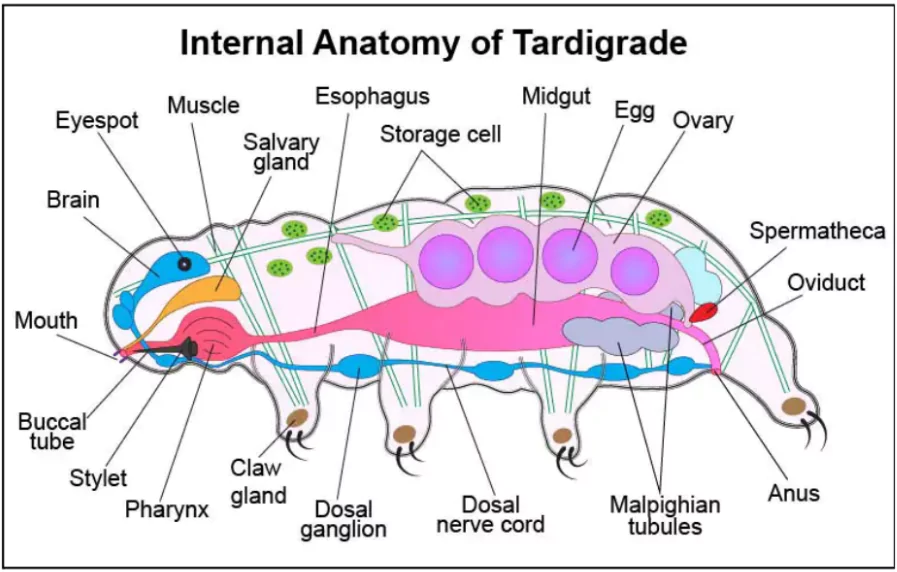Researchers in China identified a new tardigrade species, Hypsibius henanensis, from moss samples collected in Funiu Mountain, Henan province with the ability to withstand Radiation.
Key highlights of the study
- Genome Sequencing: Scientists sequenced the genome of Hypsibius henanensis, revealing 14,701 genes, with around 30% unique to tardigrades.
- Radiation Exposure: The team subjected this tardigrade species to high doses of gamma radiation, far exceeding human survivability limits, to study its response.
Enroll now for UPSC Online Classes
Tardigrades’ radiation resistance reasons
- Genetic Adaptation: The researchers have identified the genetic mechanisms that help a newly discovered species of tardigrades (Hypsibius henanensis) withstand high levels of radiation.
- DNA Repair Genes: They identified 2,801 genes involved in DNA repair processes. Key elements include:
- TRID1 Protein: Aids in rapid repair of DNA double-strand breaks resulting from radiation.
- Mitochondrial Proteins: Two proteins, generated from a radiation-activated gene, are crucial for mitochondrial synthesis and DNA repair.
- Betalain Pigments: These antioxidant pigments help neutralise reactive chemicals caused by radiation exposure, protecting cellular structures.
About Tardigrades (Hypsibius henanensis)
- Tardigrades are resilient Creatures also known as water bears or moss piglets.
- They are microscopic, eight-legged animals, typically about 1 mm (0.04 inch) or smaller.
- Classified as free-living invertebrates in the phylum Tardigrada.
 Their tiny, boneless bodies are supported by a hydrostatic skeleton filled with hemolymph (a fluid-filled compartment).
Their tiny, boneless bodies are supported by a hydrostatic skeleton filled with hemolymph (a fluid-filled compartment).- Equipped with a specialised mouthpart called a buccal pharyngeal apparatus, enabling them to suck nutrients from plants and other microorganisms.
- Known as extremophiles, capable of surviving extreme environmental conditions.
- Require a thin layer of water around their bodies to prevent dehydration, making them effectively aquatic.
- Found globally across terrestrial, marine, and freshwater environments from the Arctic to the Antarctic, including high altitudes and deep-sea regions.
Check Out UPSC NCERT Textbooks From PW Store
Potential Application of Tardigrades
- Space Exploration: Protecting astronauts from cosmic radiation.
- Nuclear Clean-up: Enhancing radiation tolerance for workers in radioactive environments.
- Cancer Treatment: Potentially improving radiation therapy for cancer patients by enhancing human cell stress resistance.
- Testing on Human Cells: Tardigrade-derived betalain pigments improved the survival rate of human cells exposed to radiation, suggesting promising applications for human health.
![]() 28 Oct 2024
28 Oct 2024

 Their tiny, boneless bodies are supported by a hydrostatic skeleton filled with hemolymph (a fluid-filled compartment).
Their tiny, boneless bodies are supported by a hydrostatic skeleton filled with hemolymph (a fluid-filled compartment).